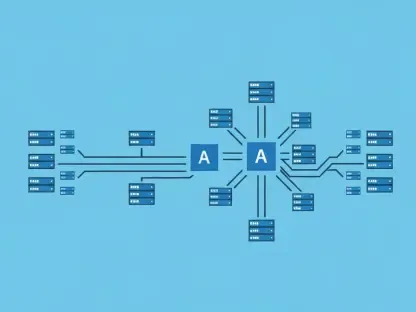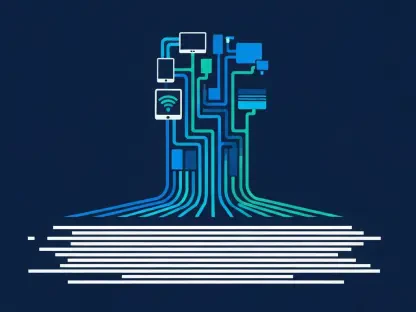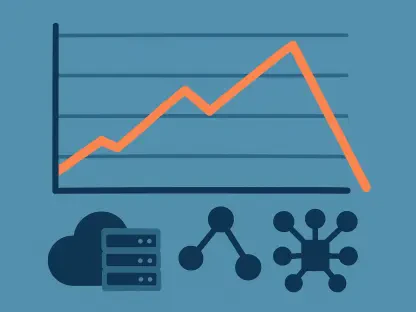The rapid integration of generative AI tools within runtime environments and cloud infrastructure security is presenting both significant advancements and notable risks within software supply chains. Companies such as Lightrun and ZEST Security are leveraging these advanced technologies to enhance debugging and security measures. This reflects the critical need for sophisticated automation to tackle increasingly complex vulnerabilities. As the volume of security alerts and vulnerabilities grows, the reliance on automation and advanced AI tools is becoming essential for organizations looking to safeguard their systems and maintain developer productivity.
The Rise of Automation in Security Management
Managing High Volumes of Security Alerts
The necessity of automation in managing the substantial volume of security alerts and vulnerabilities cannot be overstated. In today’s tech landscape, where the frequency and complexity of threats are ever-increasing, manual management of security incidents is both inefficient and ineffective. Automated systems, augmented by generative AI, can reduce alert volumes by as much as 97%. This dramatic reduction alleviates the burden on security teams, allowing them to focus on more strategic tasks such as remediation of the most critical vulnerabilities.Additionally, the predominant types of vulnerabilities, such as command injection, sensitive data exposure, and cross-site scripting, are particularly challenging to address manually. Automated tools excel in these areas by offering continuous, real-time monitoring and immediate responses to detected issues. This level of efficiency is essential for maintaining the integrity and security of cloud infrastructures and runtime environments. As more companies adopt automation, the capabilities of these tools are continually refined, leading to even more precise and effective security measures.
Leveraging OSC&R for Contextual Analysis
Frameworks like OSC&R have become invaluable in the prioritization of remediation efforts through detailed insights into potential attack paths. The use of such frameworks in conjunction with generative AI tools allows for a clear understanding of vulnerabilities within the software supply chain. This contextual analysis is crucial for organizations aiming to proactively address security issues before they can be exploited.By automating the correlation of alerts with these contextual frameworks, security teams can pinpoint core issues more accurately and efficiently. This targeted approach not only enhances the effectiveness of DevSecOps initiatives but also ensures that security measures are integrated seamlessly into the development process without causing significant disruptions. The ability to provide focused remediation helps maintain a balance between robust security and high developer productivity, a crucial factor in the fast-paced world of software development.
The Role of Generative AI in Enhancing Security
Advanced Debugging and Threat Detection
Generative AI tools are playing an increasingly vital role in enhancing debugging and threat detection within runtime environments and cloud infrastructures. Companies like Lightrun and ZEST Security are at the forefront of this technological evolution. These tools utilize machine learning algorithms to identify and mitigate potential security threats in real time. The precision and speed of these AI tools are unmatched, providing a significant advantage over traditional methods.The adoption of generative AI not only improves the accuracy of threat detection but also enhances the overall efficiency of security operations. For instance, these tools can identify patterns and anomalies that might be missed by human analysts, leading to faster detection and resolution of issues. As a result, organizations can respond to threats more swiftly, reducing the likelihood of successful attacks and minimizing potential damage.
Balancing Security and Developer Productivity
Adopting generative AI tools presents a balanced approach to addressing security needs without compromising productivity. While developers may initially resist disruptions to their workflow, the long-term benefits of integrating automated, contextual analysis tools are clear. These tools streamline the identification and remediation of vulnerabilities, allowing developers to focus on their primary tasks without being bogged down by security concerns.Security experts underscore the significance of automating the correlation of alerts to pinpoint core issues, thereby enhancing the focus and effectiveness of DevSecOps initiatives. This approach ensures that security measures are not only robust but also seamlessly integrated into the development lifecycle. In essence, the adoption of generative AI tools provides a strategic advantage by enhancing security measures while maintaining high levels of developer productivity.
Regulatory Pressures and Future Trends
The Impact of Stringent Regulations
Stringent regulations are driving organizations to integrate automated solutions to address known vulnerabilities more expediently. As regulatory frameworks become more comprehensive, the need for immediate and effective responses to security threats is paramount. Automated systems powered by generative AI are uniquely suited to meet these demands by providing rapid, accurate detection and response capabilities.These regulatory pressures have also highlighted the importance of continuous monitoring and compliance. Automated tools not only assist in identifying vulnerabilities but also ensure that security measures are consistently updated to comply with evolving regulations. This proactive approach is essential for organizations looking to mitigate risks and avoid potential penalties associated with non-compliance.
Future Trends in DevSecOps
The rapid integration of generative AI tools into runtime environments and cloud infrastructure security is ushering in significant advancements and notable risks within software supply chains. Companies like Lightrun and ZEST Security are harnessing these advanced technologies to enhance both debugging protocols and security measures. This underscores the crucial need for sophisticated automation to address increasingly intricate vulnerabilities. As the number of security alerts and detected vulnerabilities rises, organizations are becoming increasingly reliant on automation and advanced AI tools to protect their systems and maintain developer productivity. The effectiveness of these tools in identifying and rectifying potential threats cannot be overstated. Incorporating AI into these processes not only improves security measures but also ensures that developers can focus on innovation rather than constantly putting out fires. Therefore, it is essential for organizations to continually adapt to new technologies in AI, as these tools play a critical role in safeguarding data and infrastructure while optimizing overall workflow efficiency.









